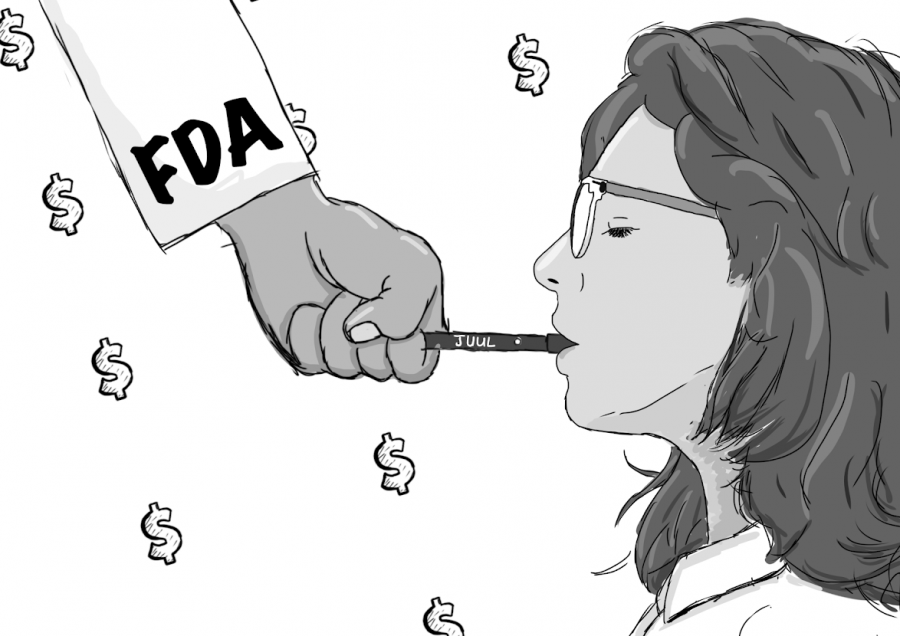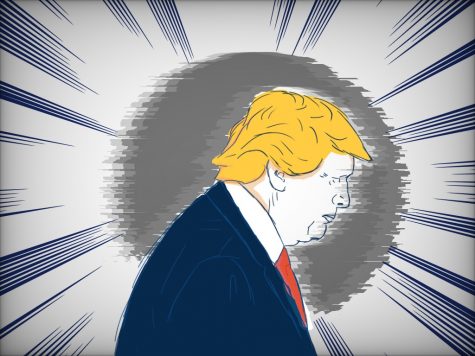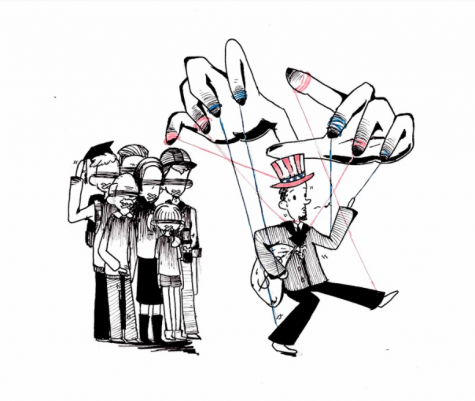Vaping in America: a Buzzing Issue
Vaping, particularly Juuling, has wormed its way into high school and college campuses across the country. While the explosion of Juuling is unhealthy for all age groups, it is especially damaging to minors due to nicotine’s effect on developing brains. Per Business Insider, Boston Children’s Hospital clinical pediatric fellow Nicholas Chadi stated in April that e-cigarette usage in young people is connected to problems with impulsivity and sensitivity to other drugs.
As a result of the modern teen nicotine trend – labeled an “epidemic” by Food and Drug Administration (FDA) commissioner Scott Gottlieb – the FDA has recently decided to impose restrictions on flavored tobacco products. This new regulation stems from the belief that these flavorings do not reach the target market of ex-smokers, but instead target children and young adults. Marketing photos on the Instagram pages of Juul and other vape companies have featured young models and social media “influencers” using their products until Juul deleted its social media pages under pressure from the FDA.
In the face of this new age of nicotine marketing, images of “Joe Camel” come to mind. This animated chain-smoking camel appeared in cigarette ads in the 1980s-90s. “Joe Camel’s” cartoonish appearance openly targeted minors, the same demographic at which Juul Labs is aiming its advertising now.
Making nicotine “easier” and “more fun” for children to consume is a recipe for the new generation of smokers that addiction profiteers dream of. Upon seeing that youth smoking, which had plummeted in recent years, was now on the rise in tandem with the new vaping market, the FDA took steps that undeniably slowed manufacturers’ progress, but many concerns remain unallayed.
Detractors may say that this piece of legislation only tackles the next generation of potential smokers. I am inclined to agree. While the FDA’s restrictions are an extremely important step, it does nothing to address those who are already addicted to these very high concentration nicotine products (which the American Association of Pediatricians considers more addictive than cigarettes). In order to save our generation from the side effects of vaporized nicotine, the FDA must take a different approach in conjunction to the new regulations.
The key to curbing vaping is changing its image as a “safer alternative” to using cigarettes, cigars, and chewing tobacco. The Centers for Disease Control and Prevention posits that very few high schoolers believe that vaping is harmful, compared to the 20% of high school students who answered that they currently vape on a federal survey.
This means a primary reason that many young nicotine addicts continue to vape and that the trend continues to grow, is because of unawareness of the consequences. The FDA must make it clear, through various forms of advertising and mandatory packaging labels on all vaporized nicotine products, that vaporized nicotine is not only extremely addictive, but a wild card of health risks tied to lung problems, heart disease, and anxiety. If a clear parallel can be painted between the lung cancer-ignorant age of the early 20th century and today, this may help decrease the number of young people currently affected by the epidemic and save this generation of teenagers from the same issues as those who were young in the 1970s face to this day.
It is incredibly important that the FDA approaches this advertising campaign carefully. It must be careful not to fall into the failed attempt at relatability that the anti-tobacco organization #truth tried to use three years ago with their “left swipe dat” campaign. This pseudo-youthful messaging only comes across as desperate and falls upon deaf ears. At the same time, using the “this is your brain/this is your brain on drugs” shock factor approach has become a joke as well. Instead the FDA must advertise the health risks of vaping without being either preachy or laughably imitative of young people.
Through continued legislation, and, more importantly, careful marketing, I believe the youth nicotine problem in America can be remedied.














